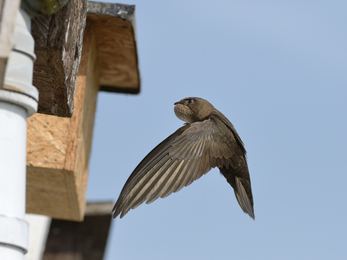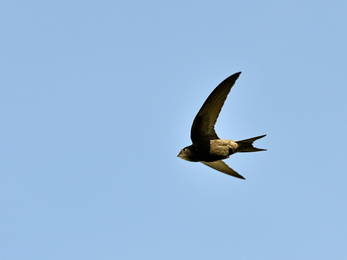You can’t get much wilder than spending the first three years of your life in the air. That’s what young swifts are capable of.
To start with, their life is dark and still; hatching from an egg the size of a thumbnail in May, they snuggle in a cavity nest in a building for the next few months. But by the end of July, they are peeping out of the little hole to the world below.
Since their nests are often under roof eaves, it’s easy to imagine what they see – the villages and towns of our shared homes, just from above.
Then, suddenly, they launch themselves out, like feathered rockets.
They turn into adventurers, flying away from Europe, over the Sahara, towards the rainforests of Africa, a swathe of green trees humming, buzzing and singing with life. But swifts never set foot there. They spend more time airborne than any other bird on earth yet when they come home, they come home to us, returning to the exact nesting sites each year.




